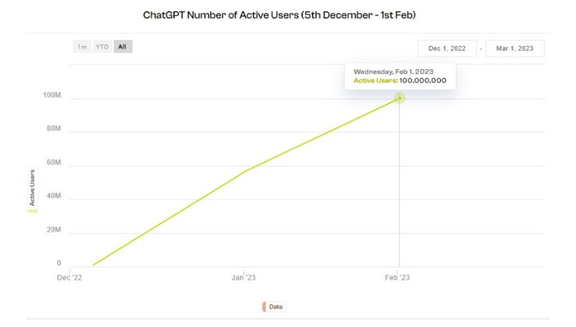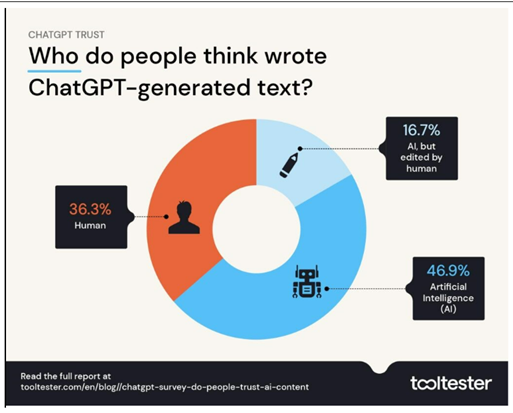By
EJ Bowen
|
Date Published: May 31, 2023 - Last Updated July 12, 2023
|
Comments
Contact centers have always been at the forefront of innovation in a world of ever-changing technology, adjusting to meet customers' changing needs. In a previous piece, we discussed the metaverse's potential impact on the contact center environment, imagining a future in which virtual reality and immersive experiences might improve consumer interactions. However, recent issues expressed by no other than Mark Zuckerberg have caused us to reconsider the direction contact centers should target.
As the metaverse continues to confront uncertainty and roadblocks on its journey to mass adoption, another technology, ChatGPT, is rapidly gaining momentum and influencing the way contact centers operate. ChatGPT technology, which is powered by advanced natural language processing and machine learning, has the potential to redefine customer interactions, improve agent support, and create unrivaled customization.
In this follow-up article, we delve into the world of GPT technology and examine how contact centers might benefit from its capabilities. We will help you understand the possibilities of this disruptive technology, explain its uses, and discuss how to create a path for contact centers to embrace it.
The Rise of ChatGPT – an introduction to the technology
ChatGPT is a big step forward in conversational AI, fueled by powerful natural language processing and machine learning techniques. This technology has significantly advanced in comprehending and producing human-like text, allowing contact centers to transform customer interactions. ChatGPT, unlike standard chatbots that use pre-defined scripts, can engage in dynamic and context-aware conversations, making it an invaluable tool for contact centers looking to deliver personalized and efficient assistance.
In January 2023, ChatGPT reached 100 million active users and is expected to reach over 1 billion users by the end of 2023.

The sheer volume of users embracing the technology presents several use cases for the contact center environment. Moreover, estimates from analytics firm CallMiner say that customer wait times have tripled, and service employee turnover has increased up to 300% in some businesses. ChatGPT solves these issues by working alongside humans to boost contact center efficiency through real-time responses.
Enhancing customer interactions: Personalized and natural conversations
One of ChatGPT's primary benefits is its ability to establish tailored and natural discussions with customers. ChatGPT can provide responses personalized to individual customers' needs by analyzing massive volumes of data, such as customer profiles, interaction history, and preferences. Personalization improves customer satisfaction and promotes a sense of connection and loyalty.
ChatGPT can propose similar products based on their interests if a consumer has already purchased a product. Klarna uses ChatGPT to recommend products to customers based on their input. A contact center agent could not analyze such vast volumes of data and provide a real-time response. Furthermore, ChatGPT has a remarkable ability to grasp and interpret customer queries, allowing it to offer relevant and helpful responses. ChatGPT can efficiently assist consumers with complex enquiries or step-by-step processes, resulting in faster issue resolution and less effort.

Improving efficiency and scalability: Automation and intelligent routing
ChatGPT's capacity to automate mundane processes and streamline operations is another advantage in contact centers. Contact centers can automate handling typical enquiries and commonly asked questions by using ChatGPT as a virtual assistant. This automation relieves human agents' workload, allowing them to focus on more sophisticated and value-added interactions.
Furthermore, ChatGPT technology supports intelligent routing, ensuring that client inquiries are routed to the most appropriate agents or departments. ChatGPT can accurately determine the required knowledge and route discussions by evaluating the content and sentiment of customer messages. This intelligent routing enhances overall operational efficiency by optimizing agent use, reducing response times, and reducing response times.
Meta, Canva, and Shopify, among others, are already employing GPT technology in their customer care chatbots. Shopify users can immediately add the ChatGPT plugin to their store and support customer service with intuitive conversations.
Increased Scalability: Leveraging Technology for Greater Flexibility and Growth
Scalability is a critical component in the dynamic landscape of contact centers, as it directly affects their ability to satisfy consumer expectations and respond to changing company needs. Contact centers now have a strong tool at their disposal to achieve unprecedented levels of scalability because of the introduction of ChatGPT technology. Let's look at how this technology helps contact centers to be more flexible and create long-term growth.
Meeting Peaks and Valleys with an Elastic Workforce
One of the most challenging difficulties contact centers confront is handling variable call volumes. Hiring and training more agents to manage busy periods is a traditional strategy that may be costly and time-consuming. ChatGPT technology provides a solution by delivering a flexible workforce that can scale up and down on need.
Contact centers can swiftly handle substantial call volumes by deploying ChatGPT as virtual agents, eliminating the need for expensive recruitment and training processes. These virtual agents may engage with consumers, handle problems, and practically give help, ensuring that service levels are maintained during peak times. During slower times, the virtual agents can be dynamically modified, lowering operational expenses while maintaining a high level of customer support.
Survey data shows that almost 40% of people still believe support responses are written by humans, showing the level of sophistication ChatGPT can bring, even in its early stages of development. By automating repetitive tasks without requiring breaks, holidays, or sick days, ChatGPT can heavily decrease contact center costs. Juniper Research shows businesses can save around $11 billion annually by implementing AI chatbots, and Accenture suggests a reduction in customer service costs of 25%. Adding ChatGPT to existing AI could increase those figures tenfold.

Meeting Customers Where They Are Through Omnichannel Support
Customers want seamless experiences across several channels in today's interconnected environment, including voice conversations, chat, social media, and email. Genuine omnichannel assistance can be challenging, requiring tremendous resources and coordination. ChatGPT technology, on the other hand, provides a cohesive solution that can be applied across numerous channels to provide consistent and tailored experiences.
Contact centers can use ChatGPT to provide consumers with the freedom to choose their favorite communication channel while providing a consistent experience. Customers can move from one channel to another without repeating information; that’s because ChatGPT remembers context and history. This omnichannel assistance improves customer satisfaction, increases efficiency, and enables contact centers to accommodate a broader range of consumer preferences.
Breaking Down Language Barriers for Global Reach
Contact centers frequently serve customers from many linguistic backgrounds in an increasingly interconnected globe. Language hurdles can be tough to overcome, necessitating language-specific support teams or costly translation services. ChatGPT technology allows contact centers to break down language boundaries and serve consumers in their native language.
ChatGPT can automatically translate and generate responses in several languages by exploiting multilingual capabilities, allowing for seamless conversation. Contact centers may grow into new areas and provide help to consumers all over the world without the requirement for expensive language training or the hiring of extra language-specific agents. This scalability in language support allows contact centers to join global markets and generate business growth.
In the next part of this two-part series, EJ Bowen discusses some strategies for successfully implementing GPT technology in your contact center. You can read that article here.